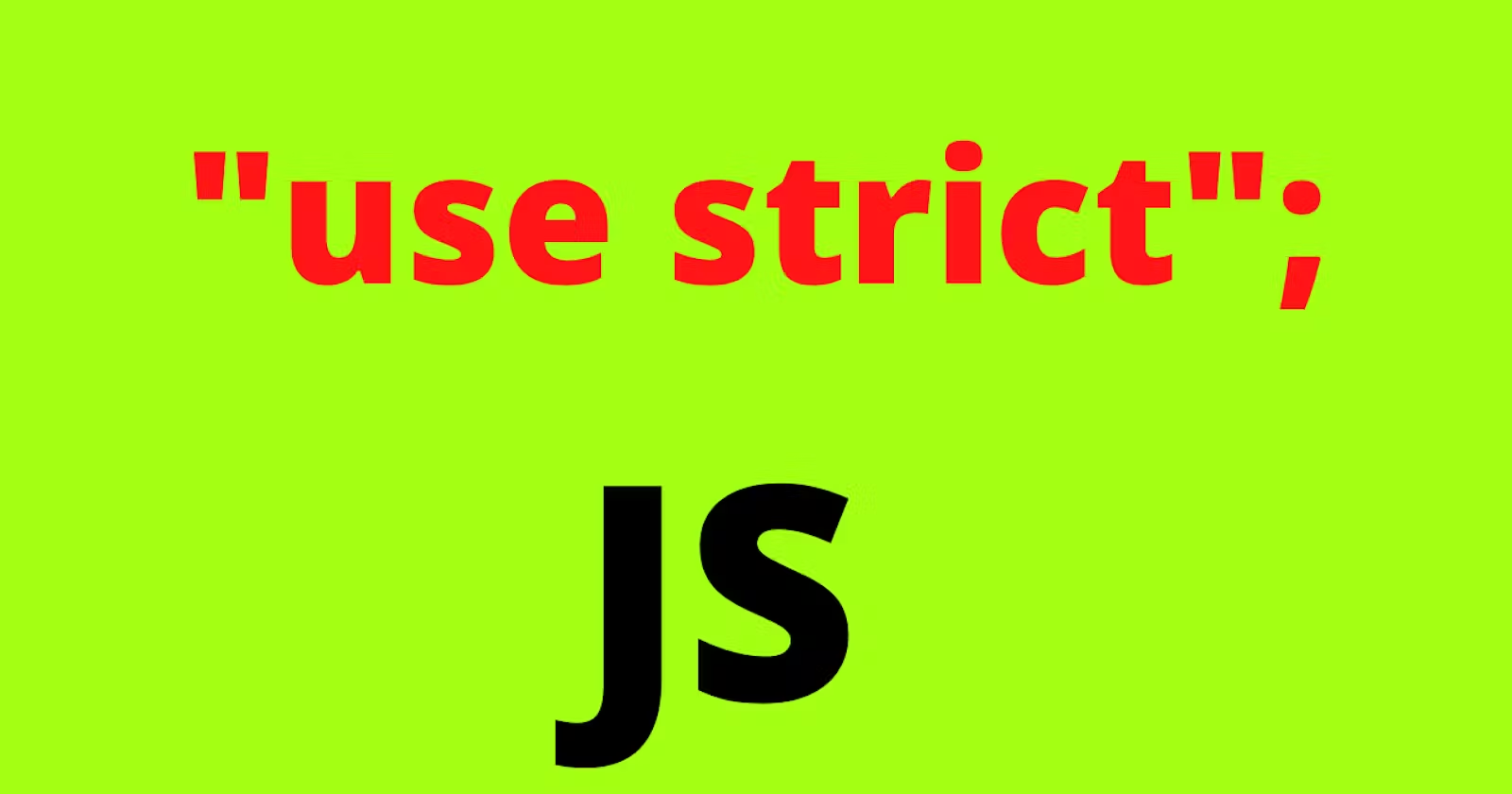All About " Strict Mode " in JavaScript
 Maanil Verma
Maanil Verma
Hi, welcome to my new blog where I will make you understand the importance of the " use strict " mode in JavaScript.
Since you know JavaScript is a scripting language therefore it shows the correct output even if the script has some errors in it.
Now, to solve this problem in ECMAScript 5, a feature called " use strict "; [ Strict Mode ] was introduced.
" use strict "; expression is used to enable the Strict Mode in JavaScript.
Let's discuss more about the Strict Mode feature in detail !!
What is Strict Mode?
Strict Mode is a new feature in ECMAScript 5 which allows you to write a program or function in a Strict operating context. It prevents the program to execute if it contains some bugs or errors and shows the exceptions.
Why do we need Strict Mode?
Prevents Syntax Mistakes by throwing errors.
Prevents errors that go unnoticed by throwing exceptions.
Prevents from taking illegal actions in JavaScript like accessing the global object.
Helps browser in Optimizations which otherwise are difficult to make.
How do you declare strict mode?
Strict Mode should always be written on the top of the script using " use strict " or ' use strict '.
COPY
// Here Strict Mode is activated.
" use strict ";
let myName = " Maanil ";
console.log(myName); // Output: Maanil
// Here Strict Mode is not activated as it is ignored
let myName = " Maanil ";
console.log(myName); // Output: Maanil
" use strict "; // Here strict mode gets neglected by the JavaScript.
This is how we declare strict mode right at the top of the Script.
Using Strict Mode with Variables
- When we declare " use strict " in the Script
COPY
//When "use strict" is declared at the top it has Global Scope.
"use srict";
myName = "Maanil";
console.log(myName);
// It will throw a Reference Error as we have not defined the variable.
- Without "use strict"
COPY
myName = "Maanil";
console.log(myName); // Output: Maanil
In the above case, without Strict Mode it executes without error as JavaScript automatically defines it as a variable and Strict Mode is used to eradicate these types of errors.
Using Strict Mode with Functions
Strict Mode in Functions has local scope if "use strict" is defined inside the function.
COPY
firstNumber = 3.14; // This will not cause an error.
pieFunction();
function pieFunction() {
"use strict";
secondNumber = 3.14; // This will cause an error as "use strict" has local scope.
}
Mostly Strict Mode is used when we are involved in the process of Web Development.
Summary
I hope this article has clarified all your misconceptions about the Strict Mode. Before I summarize the learnings, let me tell you one thing this "Strict Mode" comes with caution and a developer should know when to use it and when to not.
I will discuss the cautions of using Strict Mode in some other article. For now, let's jot down the learnings:
Strict Mode is a new feature in ECMAScript 5 which allows you to write a program or function in a Strict operating context.
" use strict "; expression is used to enable the Strict Mode in JavaScript.
Strict Mode should always be written on the top of the script.
When "use strict" is declared at the top it has Global Scope.
Strict Mode in Functions has local scope if "use strict" is defined inside the function.
Mostly Strict Mode is used when we are involved in the process of Web Development.
That's it from this blog, I hope we will meet again in some other blog.
Till then keep JavaScripting and Stay Tuned !!
Subscribe to my newsletter
Read articles from Maanil Verma directly inside your inbox. Subscribe to the newsletter, and don't miss out.
Written by

Maanil Verma
Maanil Verma
Frontend Engineer developing smooth UI's at scale